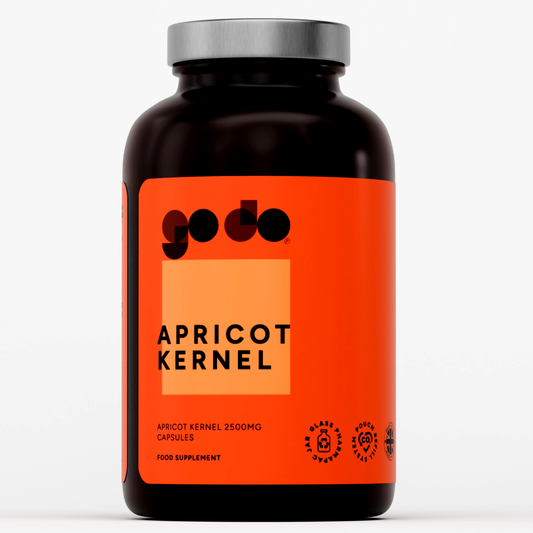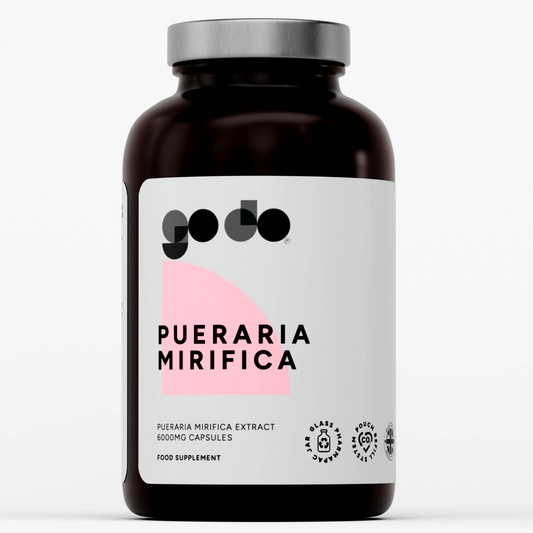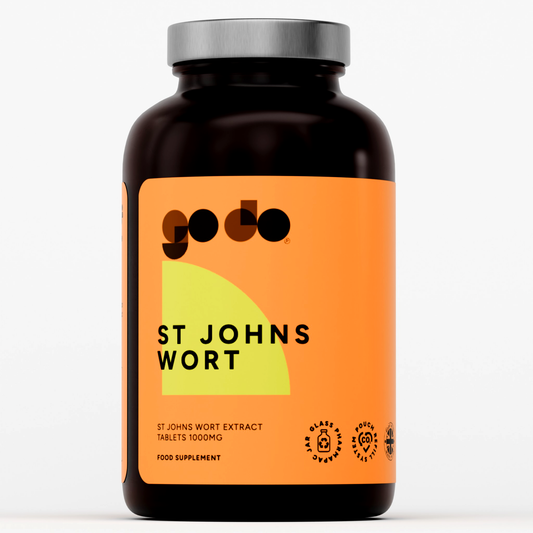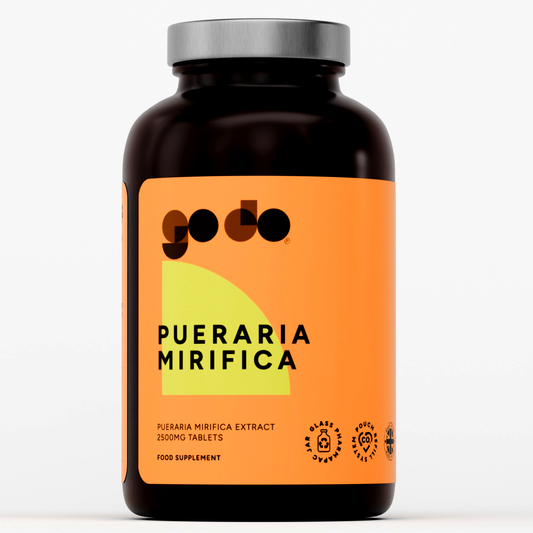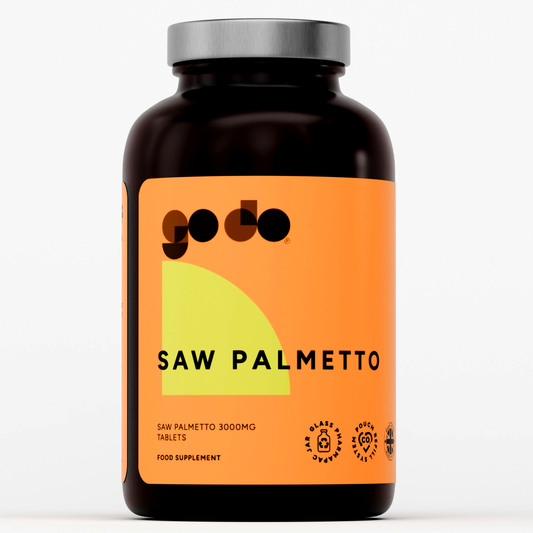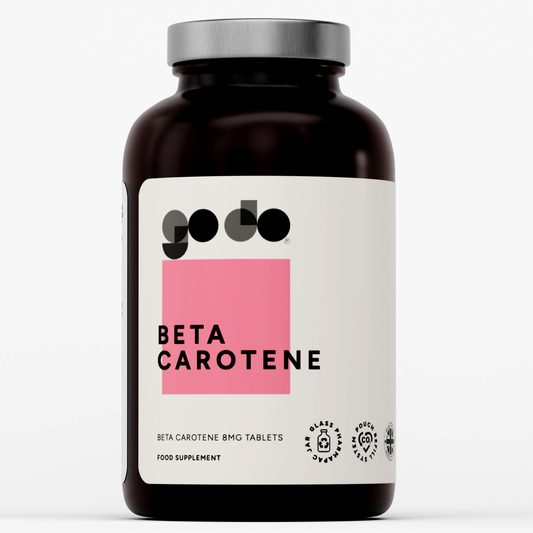How Much Protein Do I Need for Optimal Health and Performance?
Introduction to Protein Requirements
Protein is an essential macronutrient that serves as the building block for muscle tissue, enzymes, hormones, and countless other structures in the body, making dietary protein absolutely crucial for meeting the body's nutritional requirements and supporting overall health, performance, and daily functioning. The recommended dietary allowance (RDA) for protein is 0.8 grams per kilogram of body weight for the average sedentary adult, but this baseline recommendation often falls short for active individuals, athletes, older adults, and those with specific health or performance goals. The RDA is based on basic nutritional requirements to prevent deficiency and maintain health. A higher protein diet can help preserve and build muscle mass, support fat loss by increasing satiety and preserving lean tissue during calorie restriction, and enhance recovery from exercise and daily physical stress. Adequate protein intake is essential for the body's immune system function, maintaining hormone balance, supporting healthy skin and hair, facilitating wound healing, and meeting overall metabolic health needs throughout all life stages. Consuming enough protein can be achieved through a balanced diet that includes a variety of dietary protein sources such as lean meats, poultry, fish, eggs, dairy products, legumes, whole grains, nuts, seeds, and plant-based protein options.
Factors Affecting Protein Needs
Body weight is a fundamental factor in determining protein needs, with heavier individuals requiring more total protein to support their larger muscle mass and overall metabolic demands compared to lighter individuals. For most adults, activity level significantly impacts protein requirements, with endurance athletes needing approximately 1.2-1.4 grams per kilogram, strength athletes requiring 1.6-2.2 grams per kilogram, and highly active individuals generally benefiting from more protein than sedentary people. Age is another critical factor, with older adults (typically over 65) requiring more protein—often 1.2-1.5 grams per kilogram—to combat age-related muscle loss (sarcopenia) and maintain functional independence and quality of life. Dietary restrictions, such as vegetarian or vegan diets, require careful planning to ensure adequate protein intake and complete amino acid profiles, often necessitating strategic food combinations or supplementation. Health conditions including kidney disease, liver disease, certain metabolic disorders, and pregnancy or lactation can significantly affect protein needs, making it essential to consult with a healthcare professional or registered dietitian for personalized recommendations.
Calculating Daily Protein Intake

To calculate how much protein to intake daily, start by converting your body weight to kilograms (divide pounds by 2.2), then multiply by the recommended amount of protein per kilogram based on your activity level and goals. For example, a 154-pound (70-kilogram) sedentary person would require approximately 56 grams of protein per day based on the basic RDA of 0.8 grams per kilogram, though this is often considered a minimum rather than optimal amount. The recommended daily protein intake may vary depending on factors such as weight, activity level, age, and health conditions, and authoritative guidelines from organizations like the Food and Nutrition Board or sports medicine experts can help provide personalized recommendations. However, protein needs vary significantly based on individual factors, and using a protein calculator that accounts for age, sex, activity level, and goals can provide a more accurate and personalized estimate for optimal health and performance. It’s important to consider not just the quantity but also the quality of protein, ensuring you’re consuming sources that provide all essential amino acids—the building blocks your body cannot produce on its own and must obtain from food. For most active individuals seeking to optimize health, performance, and body composition, aiming for 1.6-2.2 grams of protein per kilogram of body weight daily (approximately 0.7-1.0 grams per pound) can effectively support muscle growth, recovery, and metabolic health. A higher daily protein intake, especially when spread throughout the day, may offer additional benefits for preserving muscle mass and strength.
Protein-Rich Foods and Sources
Lean meats such as chicken breast, turkey, and lean cuts of beef are excellent high-protein sources that are also relatively low in saturated fats when properly trimmed and prepared using healthy cooking methods. While red meat is a rich source of protein, it should be consumed in moderation due to potential health risks associated with excessive intake, such as increased risk of cardiovascular disease. Fish and seafood, including salmon, tuna, cod, shrimp, and other varieties, provide high-quality protein along with beneficial omega-3 fatty acids, vitamins, and minerals that support heart health, brain function, and overall wellness. Eggs are among nature’s most complete protein sources, containing all the amino acids required for health in optimal ratios along with important nutrients like choline, vitamin D, and B vitamins, making them an economical and versatile protein option. Dairy products including Greek yogurt, cottage cheese, milk, and high protein foods like cheese provide high-quality protein along with calcium and other nutrients, though individual tolerance and dietary preferences should guide consumption levels. Plant-based protein sources such as beans, lentils, chickpeas, quinoa, tofu, tempeh, edamame, nuts, seeds (especially chia and hemp), and whole grains can meet protein needs when consumed in adequate amounts and proper combinations. Plant based foods are also typically lower in saturated fat and higher in vitamins and antioxidants, making them a nutritious choice, though they may require larger volumes to match the protein density of animal sources.
Protein Quality and Complete Proteins

Protein quality refers to how well a protein source provides all essential amino acids in the ratios your body needs for optimal function, with animal proteins generally considered "complete" because they contain all nine essential amino acids in adequate amounts. Complete proteins from animal sources like meat, poultry, fish, eggs, and dairy are efficiently used by the body for muscle protein synthesis and other metabolic processes, but excess protein may not provide additional benefits. making them particularly valuable for athletes and those focused on building or maintaining muscle mass. Plant-based proteins from sources like beans, lentils, grains, nuts, and seeds are often "incomplete," meaning they may be low in one or more essential amino acids, though this can be easily remedied by consuming a variety of plant proteins throughout the day. The concept of "protein complementing"—combining different plant proteins like rice and beans or peanut butter and whole wheat bread—was once thought to be necessary at each meal, but research now shows that eating a variety of plant proteins throughout the day naturally provides all essential amino acids. High-quality protein sources should be prioritized over processed options, as whole food proteins come packaged with beneficial nutrients, fiber (in plant sources), and bioactive compounds, while avoiding excessive saturated fats, sodium, and additives found in many processed protein products.
Protein Distribution Throughout the Day
Distributing protein intake evenly throughout the day, rather than consuming most of it in one meal, appears to optimize muscle protein synthesis and may better support muscle maintenance and growth compared to irregular consumption patterns. It is important to consider not just how much, but also when and how you consume protein throughout the day to maximize health benefits and muscle preservation. Aiming for approximately 20-40 grams of high-quality protein per meal, consumed across 3-5 meals throughout the day, can help maintain steady amino acid availability for muscle repair, immune function, and other protein-dependent processes. Research suggests that consuming at least 20-30 grams of protein at breakfast can help reduce hunger throughout the day, improve satiety, support better blood sugar control, and potentially enhance body composition outcomes over time. Including a source of protein with each meal and snack helps stabilize blood sugar levels, prevents energy crashes, reduces cravings for less nutritious foods, and supports sustained energy for physical and mental performance. The practice of consuming protein shakes before bed (approximately 20-40 grams) has been shown to support overnight muscle protein synthesis and recovery, particularly beneficial for athletes, active individuals, and older adults seeking to maintain or build muscle mass.
Protein Timing for Exercise Performance

Consuming protein within the “anabolic window”—traditionally thought to be 30-60 minutes after exercise—may help optimize muscle recovery and growth, though recent research suggests this window is actually much wider, up to several hours, especially if you’ve eaten protein before training. Pre-exercise protein consumption (1-2 hours before intense exercise) can provide amino acids during the workout, reduce muscle breakdown during exercise, and extend the post-workout recovery window, potentially improving overall training adaptations and performance. Post-exercise protein intake of approximately 20-40 grams, ideally from high-quality sources containing adequate leucine (a key amino acid for muscle protein synthesis), supports muscle repair, replenishes depleted stores, and initiates the recovery process. Protein intake after workouts is especially important for building muscle, as it provides the necessary nutrients for muscle tissue growth and development. The total daily protein intake is ultimately more important than precise timing for most people, though strategic timing around workouts can provide marginal benefits for serious athletes and those training at high volumes or intensities. Combining protein with carbohydrates post-exercise can enhance recovery by replenishing glycogen stores, reducing muscle breakdown, providing energy for the repair process, and optimizing the hormonal environment for adaptation to training stress.
Special Considerations for Athletes
Endurance athletes, including runners, cyclists, and swimmers, require approximately 1.2-1.4 grams of protein per kilogram of body weight to support recovery from high training volumes, repair muscle damage from repetitive impact, and maintain immune function. Strength and power athletes, such as weightlifters, bodybuilders, and CrossFit participants, benefit from higher protein intakes of 1.6-2.2 grams per kilogram (or even up to 2.4 grams for some individuals) to maximize muscle protein synthesis and support muscle growth. It is important to ensure sufficient energy intake, as inadequate caloric consumption can impair proper protein utilization and hinder muscle development. Athletes in weight-class sports or those trying to lose body fat while maintaining muscle mass may benefit from even higher protein intakes (up to 2.3-3.1 grams per kilogram) during calorie restriction to preserve lean mass and promote fat loss. Female athletes have similar protein requirements to male athletes relative to body weight, though absolute amounts may differ due to typically lower body weights, and protein needs may fluctuate with menstrual cycle phases and during pregnancy or lactation for active women. Young athletes in growth and development stages may benefit from extra protein requirements not only for training adaptations but also for normal growth, with recommendations typically ranging from 1.4-2.0 grams per kilogram depending on training volume, intensity, and individual growth rates.
Protein Needs for Older Adults
Adults over 65 years old require higher protein intakes than younger adults—typically 1.2-1.5 grams per kilogram of body weight daily—to combat age-related muscle loss (sarcopenia), maintain functional independence, and support overall health and quality of life. Older adults may experience "anabolic resistance," meaning their muscles don't respond as efficiently to protein intake and exercise as younger individuals, necessitating higher per-meal protein doses (30-40 grams) to adequately stimulate muscle protein synthesis. Combining adequate protein intake with regular resistance training is particularly crucial for older adults, as this combination effectively combats muscle loss, maintains bone density, supports metabolic health, and preserves functional capacity for daily activities. Protein distribution is especially important for older adults, with research suggesting that evenly distributed protein intake across meals (rather than backloading at dinner) better supports muscle maintenance throughout the day. Older adults should prioritize high-quality, easily digestible protein sources such as lean meats, fish, eggs, dairy products, and protein supplements if needed, while ensuring adequate calorie intake to prevent unintended weight loss and muscle wasting.
Protein for Weight Loss and Body Composition

Higher protein diets (approximately 1.6-2.4 grams per kilogram of body weight) during calorie restriction can help preserve lean muscle mass while promoting fat loss, making them especially effective for those looking to lose weight without sacrificing muscle. Consuming higher amounts of protein is crucial to preserve muscle mass during weight loss, as it provides the necessary building blocks to maintain strength and muscle tissue even in a calorie deficit. Protein increases satiety and reduces hunger more effectively than carbohydrates or fats due to its effects on appetite-regulating hormones and the energy required to digest it (thermic effect of food), potentially leading to naturally reduced calorie intake. The thermic effect of protein—the energy required to digest, absorb, and process it—is approximately 20-30% of calories consumed, meaning your body burns more calories processing protein compared to carbs (5-10%) or fats (0-3%). During weight loss, consuming adequate protein helps maintain metabolic rate by preserving muscle mass, which is metabolically active tissue that burns calories at rest, preventing the metabolic slowdown often associated with dieting. Aiming for approximately 25-35% of total calories from protein during a fat loss phase, combined with resistance training, can optimize body composition changes, improve adherence to the diet through increased satiety, and support long-term weight maintenance after the diet ends.
Potential Risks of Excessive Protein
While protein is essential and higher intakes are generally safe for healthy individuals, consuming too much protein (typically above 2.5-3.0 grams per kilogram consistently over long periods) provides no additional benefit and may have potential downsides, especially for certain populations such as those with kidney issues or at risk for heart disease. Extra protein that the body does not need is either used for energy or stored as fat, and excessive intake may divert focus from other essential nutrients, potentially leading to imbalances and health implications.
For individuals with pre-existing kidney disease, very high protein intakes can potentially accelerate disease progression and place additional strain on compromised kidney function, though research shows that high protein diets don’t cause kidney problems in healthy individuals. However, some studies suggest that high dietary protein intake, particularly from animal sources, may increase the risk of developing kidney stones.
Extremely high protein intake can displace other important nutrients in the diet, particularly if it comes at the expense of fruits, vegetables, whole grains, and healthy fats that provide essential vitamins, minerals, fiber, and phytonutrients. Some animal-based high-protein foods are also high in saturated fat and cholesterol; consuming excessive amounts of saturated fat from these sources is linked to an increased risk of heart disease and other cardiovascular issues. Choosing lean cuts and varying protein sources, especially opting for those low in saturated fat or plant-based, can help reduce the risk of heart disease and support better overall health.
Digestive issues such as constipation can occur with how many grams of protein from very high protein intake, especially if fiber intake is inadequate, hydration is insufficient, or the protein sources are heavily processed.
Plant-Based Protein Considerations
Plant-based diets can absolutely meet protein needs, but they require enough protein through more intentional planning, larger food volumes, and strategic food combinations to ensure adequate total protein and complete amino acid profiles throughout the day. Plant proteins are often less bioavailable than animal proteins, meaning the body may not absorb and utilize them as efficiently, so plant-based eaters may benefit from consuming slightly higher protein amounts (perhaps 10-20% more) to compensate. Combining different plant protein sources—such as grains with legumes, nuts with seeds, or various vegetables with whole grains—throughout the day ensures consumption of all essential amino acids in adequate amounts for optimal health. High-quality plant protein sources include legumes (beans, lentils, chickpeas, peas), soy products (tofu, tempeh, edamame), seitan, quinoa, nuts, seeds, and protein-rich vegetables like broccoli and spinach, though larger portions are typically needed compared to animal sources. Plant-based protein powders derived from pea, rice, hemp, or combinations can help athletes and active individuals meet higher protein requirements more conveniently, though whole food sources should form the foundation of any healthy diet.
Protein Supplements: When and How
Protein supplements including powders (whey, casein, egg, plant-based), bars, and ready-to-drink shakes can be convenient tools for meeting protein needs, particularly for athletes, busy individuals, or those with higher requirements who struggle to meet them through whole foods alone. Whey protein is a fast-digesting, high-quality complete protein derived from dairy that's particularly rich in leucine and effectively stimulates muscle protein synthesis, making it popular post-workout, though it's unsuitable for those with dairy allergies or lactose intolerance. Casein protein, also from dairy, digests more slowly than whey and provides a sustained release of amino acids, making it potentially beneficial before bed or during extended periods without food, supporting overnight recovery and reducing muscle breakdown. Plant-based protein powders from pea, rice, hemp, or blended sources are suitable for vegans and those avoiding dairy, though they may require larger servings or combinations to provide complete amino acid profiles comparable to animal-based options. While protein supplements can be helpful tools, they should complement rather than replace whole food protein sources, which provide not only protein but also essential nutrients, fiber (in plant sources), beneficial compounds, and greater satiety than isolated protein products.
Assessing Your Individual Protein Needs
Determining your optimal protein intake requires considering multiple factors including body weight, activity level, training goals, age, dietary preferences, health conditions, and how your body responds to different protein amounts over time. Starting with a baseline of 1.6-2.0 grams per kilogram of body weight is appropriate for most active individuals, then adjusting based on training response, body composition changes, recovery quality, hunger levels, and performance outcomes over several weeks. Consulting with a registered dietitian, sports nutritionist, or healthcare professional can provide personalized recommendations based on your specific circumstances, medical history, blood work results, and goals, ensuring your protein intake supports rather than hinders your health. Monitoring indicators such as workout recovery, muscle soreness duration, strength progression, body composition changes, energy levels, hunger and satiety, and overall well-being can help you fine-tune your protein intake to optimal levels for your individual needs. Using tools like food tracking apps, protein calculators, or working with a nutrition professional can help ensure you're consistently meeting your protein targets while maintaining overall dietary balance and nutritional adequacy across all macronutrients and micronutrients.
Practical Strategies for Meeting Protein Goals
Planning meals and snacks in advance helps ensure adequate protein distribution throughout the day, prevents last-minute poor food choices, and makes meeting daily protein targets more manageable and sustainable over time. Preparing protein-rich foods in bulk—such as grilled chicken, hard-boiled eggs, cooked beans or lentils, or portioned protein shakes—provides convenient options that can be quickly incorporated into meals and snacks throughout the week. Including a protein source with every meal and most snacks (aiming for 20-40 grams per eating occasion) helps distribute intake evenly, maximizes muscle protein synthesis, improves satiety, and makes reaching daily totals more achievable without overwhelming single meals. Keeping convenient protein options readily available, such as Greek yogurt, cottage cheese, protein bars, jerky, nuts, seeds, or pre-portioned protein powder, helps prevent missed protein opportunities when time is limited or hunger strikes unexpectedly. Tracking how much protein intake for at least a few weeks using a food diary or tracking app can provide valuable awareness of your actual consumption patterns, help identify gaps or opportunities, and ensure you're consistently meeting your targets rather than just estimating.
Common Protein Myths Debunked
The myth that high protein intake damages healthy kidneys is not supported by research in healthy individuals—while those with existing kidney disease should moderate protein, normal to high protein diets don't cause kidney problems in people with healthy kidney function. The idea that you can only absorb 20-30 grams of protein per meal is oversimplified—while this amount may optimize muscle protein synthesis, your body can digest and utilize much larger amounts, and any excess amino acids are used for energy or other bodily functions rather than being wasted. The belief that plant proteins are inherently inferior to animal proteins is outdated—while plant proteins may be less bioavailable and sometimes incomplete, consuming a variety of plant proteins throughout the day provides all essential amino acids and supports health and performance equally well. The notion that more protein is always better for muscle growth is false—there's a threshold beyond which additional protein provides no further benefit for muscle building, typically around 1.6-2.2 grams per kilogram for strength athletes, with genetics, training, and supplementation with compounds like creatine being more limiting factors. The myth that protein causes bone loss is contradicted by research showing that adequate protein intake actually supports bone health, particularly when combined with sufficient calcium and vitamin D, and may reduce fracture risk, especially in older adults.
Conclusion and Key Recommendations
Optimal protein intake varies significantly based on individual factors, but most active individuals seeking to optimize health and performance should aim for 1.6-2.2 grams per kilogram of body weight daily (approximately 0.7-1.0 grams per pound), distributed evenly across 3-5 meals. The RDA of 0.8 grams per kilogram represents a minimum to prevent deficiency in sedentary individuals, not an optimal amount for active people, athletes, older adults, or those seeking to improve body composition or maximize performance and recovery. Focus on high-quality protein sources including lean meats, fish, eggs, dairy, legumes, and whole plant foods, prioritizing whole foods over supplements while using protein powders strategically when convenient or necessary to meet targets. Distribute protein intake evenly throughout the day with 20-40 grams per meal, include protein around workouts to support recovery, and consider individual factors like age, activity level, and goals when determining your optimal intake level. Listen to your body's responses including recovery quality, performance changes, body composition, hunger levels, and overall well-being to fine-tune your protein intake, and consult with qualified professionals for personalized recommendations based on your unique circumstances and health status.




